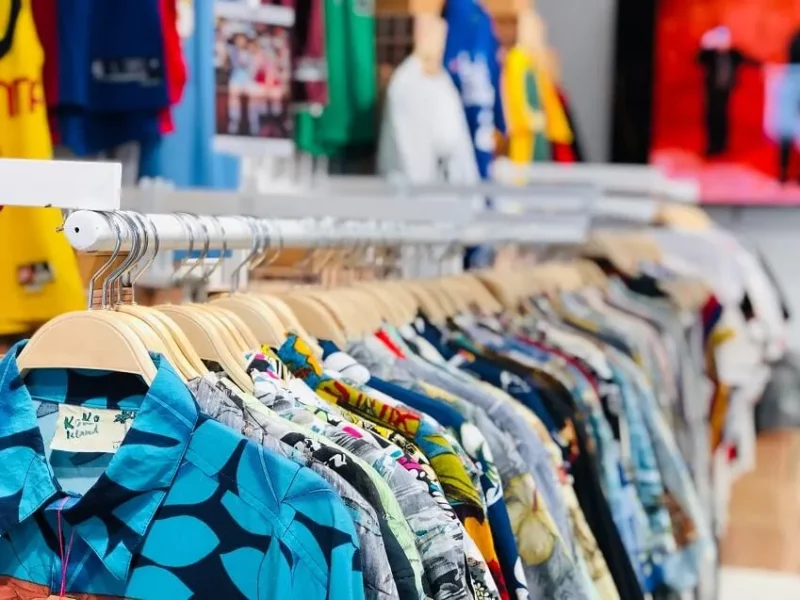Looking to the future of ecommerce, we see a field filled with personalization, digital growth, and unprecedented innovation. As technology accelerates and consumer habits change, e-commerce has become not only a trend, but a thriving sector that refuses to slow down. Today, digital marketing, which was once optional, has turned into a vital component, reshaping the traditional retail model. It is paramount for businesses including ecommerce development agencies to understand these trends and adjust their strategies. As we often say, foresight means forearm. Recognizing what’s on the horizon helps us prepare for what’s next. By diving into these changes, businesses can ensure they are not left behind. So, let us estimate what will be the scope of online retail in the coming years. Prepare yourself for an exciting journey into the future of ecommerce.
The Rise of Mobile Shopping: A Pocket-Sized Revolution
Our pocket companion smartphone is firmly rooted in e-commerce. An increasing number of consumers are taking advantage of these handheld devices for retail sales, leading to the growth of mobile commerce. This blend of convenience and connectivity enables users to browse, compare and buy products with ease – whether from their home or on the go.
This is not just a passing phase, but a tangible change in the future of online retail. With Business Insider forecasting mobile shopping to reach $488 billion by 2024 (comprising nearly 44% of ecommerce), businesses need to optimize. Their strategies should be focused towards mobile-friendliness and user-centered design.
Furthermore, technologies such as AR and AI are adding layers to the mobile shopping experience. Features like virtual fitting rooms or AI-powered recommendations can turn mobile shopping into an engaging, personalized journey.
The Power of Personalization: Customizing the Shopping Experience
Personalization has become an important piece of the ecommerce puzzle. It is the pivot of customer engagement and loyalty. The power of personalized shopping lies in interpreting customer needs and customizing their journey.
Using AI for Personalization
AI is at the forefront of the personalization race. It allows businesses to trace buyer habits, preferences and purchase history, thereby providing a unique shopping experience. It’s like having a personal shopping assistant who knows you very well!
Machine Learning’s Role
Machine learning is a potent technique that can act as a virtual salesperson. It gradually learns and adjusts to the buying patterns of each consumer, generating a sense of familiarity and ease.
Personalization’s Impact on Ecommerce
In e-commerce, personalization is a game changer. It is changing how businesses interact with their customers. It focuses on giving each buyer a valuable experience. Client satisfaction and business growth improve as a result. As we strive towards more personalised experiences, personalization has emerged as a crucial trend shaping the future of ecommerce.
Augmented Reality and Virtual Reality: Bringing Life to Online Shopping
In the landscape of ecommerce, Augmented Reality (AR) and Virtual Reality (VR) technologies are enhancing the level of customer experience. They bridge the gap between the physical and digital realms, creating a simulated environment for shoppers to interact with products just as they would in a brick-and-mortar store.
The Growing Popularity of AR
AR has gone mainstream, allowing customers to visualize products in their own area. For example, imagine being able to see how a piece of furniture fits in your living room even before you buy!
Virtual Storefronts
On the other hand, VR provides a truly immersive experience. Customers can ‘walk’ through the virtual storefront, browse products and make decisions in a simulated space. This is the closest you can get to physical shopping without leaving your home!
Future Predictions
AR and VR are set to become an integral part of ecommerce as we look to the future. Forecasts suggest an increase in the use of AR and VR as businesses seek to create more interactive and engaging online shopping experiences. Although these technologies are already changing the face of ecommerce, their full potential is yet to be revealed. It is safe to guess that they will continue to redefine the rules of online shopping.
Rise of Voice Commerce: The Sound of the Future
As we prepare for the future of ecommerce, voice commerce is emerging as a game-changer. Voice-enabled shopping, powered by smart speakers and virtual assistants, is providing consumers with a hands-free, seamless way to shop.
Voice Shopping Facility
Imagine the ease of adding products to your cart with a simple voice command. No more scrolling or clicking. All you need to do is ask! It saves time and adds a layer of convenience that suits today’s fast-paced lifestyle.
Increase in The Use of Smart Speakers
The rise in the use of smart speakers has made voice commerce possible. Led by giants like the Amazon Echo and Google Home, it’s clear that voice-enabled devices are finding their way into homes around the world.
The Future of Voice Commerce: A Look at the Figures
While previous predictions from OC&C Strategy Consultants estimated that voice shopping would exceed $40 billion in the US and UK by 2022, the growth has been remarkable. Now, in 2023, this trend is accelerating faster than ever. It is predicted that by 2026, voice commerce could become a dominant force in the ecommerce sector.
As technology advances, it is safe to expect that voice commerce will play a key role in moulding the future of e-commerce. A shopping spree has never been more appealing!
AI and ML: Digital Game Changers
With their sophisticated approach, Artificial Intelligence (AI) and Machine Learning (ML) are causing a stir in the ecommerce business. They are altering the direction of this sector by driving automation, providing a customised user experience, and providing insight into trends.
Streamlining Ecommerce Processes
AI and machine learning are more than simply buzzwords; their automation capabilities are game changers. By automating regular processes, these technologies allow up firms to strategy and focus on growth.
Personalised Shopping Experience
Today, personalization reigns supreme in the ecommerce industry. AI and machine learning are improving shopping experiences by making each interaction unique and entertaining.
Identifying Trends: A Winning Move
AI and machine learning have the potential to identify market trends. Businesses may remain ahead of the competition by connecting their services with future consumer demand.
AI and ML in Action: Real Life Ecommerce Scenarios
Take a look at Amazon’s recommendation system – it’s a clear demonstration of AI and ML at work. It assesses buyer behaviour, suggests products based on past purchases, browsing history and items in the cart. Similarly, eBay’s image search feature employs AI to pinpoint products that resemble uploaded images.
These examples highlight the important role AI and ML are playing in transforming the ecommerce sector. Their influence is only going to grow as we look to the future, paving the way for the next surge in ecommerce advancements.
Green Consumerism and Sustainable Practices: The Eco-Friendly Twist
The rise of green consumerism is a trend that’s hard to ignore. Increasingly, customers are aligning their shopping habits with their environmental values, favoring brands that reflect their commitment to sustainability. This shift is shaping the future of ecommerce.
Stability in Focus
Sustainability is not just a buzz word; This is a strategic move for modern brands. By implementing eco-friendly practices, businesses can attract conscious consumers and build loyalty and trust.
Environmentally Conscious Packaging
One major area of focus is packaging. Businesses are giving up plastic and using biodegradable or recycled materials, thereby reducing their carbon footprint.
Product Stability
The second aspect is the product itself. Companies are ensuring that their products are ethically sourced and produced by adopting principles of sustainability.
Examples of Sustainable Ecommerce Brands
Consider the outdoor clothing brand Patagonia. They are renowned for their eco-friendly products and initiatives, such as their ‘Worn Wear’ program which encourages customers to repair, reuse and recycle clothing.
Similarly, Ethique, a New Zealand-based beauty brand, offers solid beauty bars to eliminate plastic bottles. Underlining their commitment to sustainability, they have saved millions of plastic bottles from landfills to date.
As consumers continue to prioritize environmental responsibility, the trend toward sustainable practices in e-commerce is expected to strengthen. Green will not be just a color in the future; This would be a way of doing business.
Conclusion
Finally, the ecommerce business is rich with possibilities. With the dawn of the digital age, a confluence of technological discoveries and evolving consumer behaviour has set a revolutionary stage. Being adaptive is essential on this road. Businesses, particularly ecommerce development agencies, must capitalise on these forward-thinking tendencies. As a result, businesses stand to not only survive, but also prosper in the highly competitive digital market. Clearly, the ecommerce revolution is already started, signalling an exciting future. So, let us embrace change, capitalise on innovation, and ready to move forward into the potential future of ecommerce.



